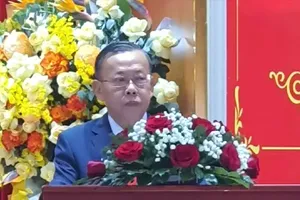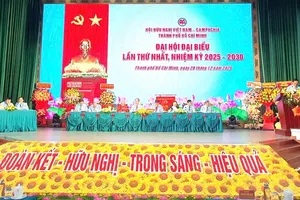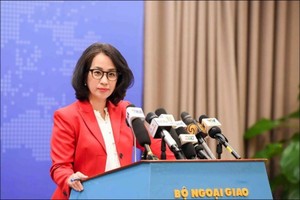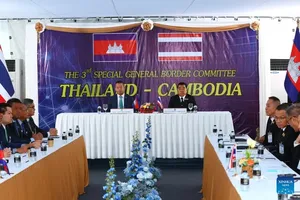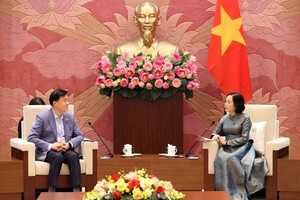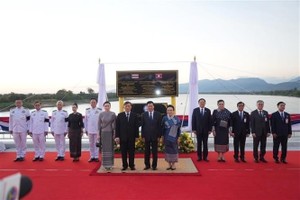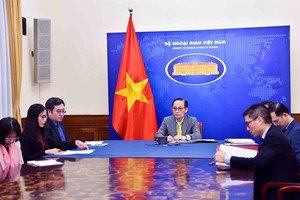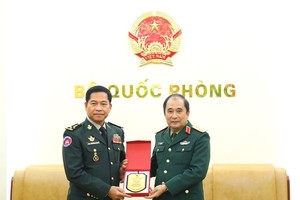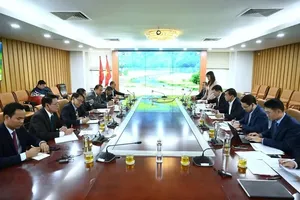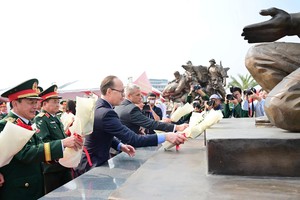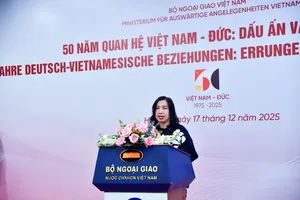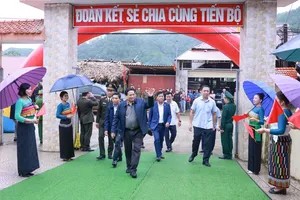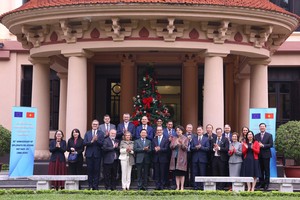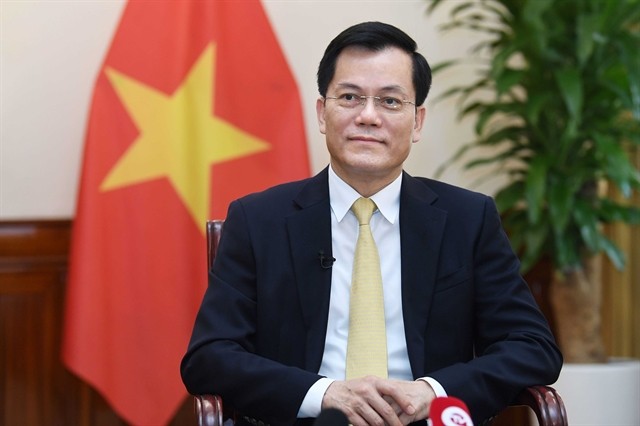 |
Deputy Minister of Foreign Affairs Ha Kim Ngoc (Photo: VNA) |
Mr. Ngoc said it will be the first State-level visit by the US President at the invitation of the General Secretary of the Communist Party of Vietnam (CPV), coinciding with the 10th anniversary of bilateral comprehensive partnership.
It is also the first time both the President and Vice President of the US have visited Vietnam during a single term. This visit will be a continuation of the tradition in the Vietnam-US relationship throughout nearly 30 years that the sitting US President have visited Vietnam.
The visit underscores the importance the two countries attach to each other in their foreign policies and their policies towards the Asia-Pacific and the Indian Ocean in particular.
For the US, the visit reflects its appreciation for Vietnam’s political regime, the role of the CPV and its General Secretary Nguyen Phu Trong, and Vietnamese leaders. It is also a significant milestone in the joint efforts of the two countries to realise the wish of President Ho Chi Minh as expressed in his February 1946 letter to US President Harry Truman for Vietnam to have full cooperation with the US, Mr. Ngoc remarked.
In nearly three decades since the normalisation of bilateral relations, two-way trade has seen remarkable and impressive growth, soaring from US$450 million in 1995 to $123 billion last year. Vietnam has become the seventh largest trade partner of the US globally and its biggest trade partner in ASEAN. Since 2022, the US has become Vietnam’s largest importer with a value of US$100 billion.
In terms of investment, the US has been one of the leading investors in Vietnam, with over $11 billion last year, not including investments through US company branches from third countries.
Several Vietnamese firms have also invested billions of US$ in the US, contributing to generating thousands of jobs for American workers.
According to the official, economic, trade and investment cooperation will remain a high priority, a cornerstone, and a driving force of bilateral relationship. Both nations will focus on cooperation in developing infrastructure, training high-quality human resources, energy transition, digital economy and green economy.
Attention will be also paid to digital technology, artificial intelligence, energy transition, biotechnology, health care and pharmaceuticals.
Another important area is cooperation in overcoming war consequences, along with UN peacekeeping activities, military medical training, search and rescue, and maritime and aviation capacity improvement.
At global and regional forums, the two countries will strengthen coordination in the Association of Southeast Asian Nations (ASEAN), the Asia-Pacific Economic Cooperation (APEC), the UN, and especially work closely together to deal with global challenges such as climate change; energy, food, water and health security.

